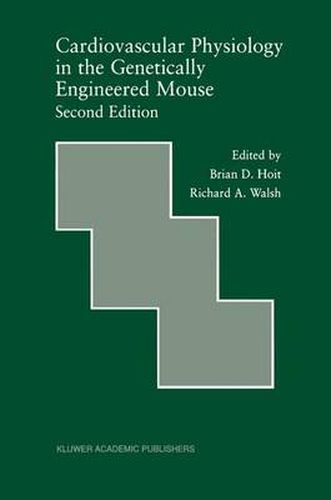Readings Newsletter
Become a Readings Member to make your shopping experience even easier.
Sign in or sign up for free!
You’re not far away from qualifying for FREE standard shipping within Australia
You’ve qualified for FREE standard shipping within Australia
The cart is loading…






This title is printed to order. This book may have been self-published. If so, we cannot guarantee the quality of the content. In the main most books will have gone through the editing process however some may not. We therefore suggest that you be aware of this before ordering this book. If in doubt check either the author or publisher’s details as we are unable to accept any returns unless they are faulty. Please contact us if you have any questions.
The enormous advances in molecular biology and genetics coupled with the progress in instrumentation and surgical techniques have produced a voluminous and often bewildering quantity of data. The need for a second edition of Cardiovascular Physiology in the Genetically Engineered Mouse is underscored not only by these rapid advances, but by the increasing numbers of scientists who have focussed their research on genetically engineered mice. It is the primary objective of this second edition to interpret critically the literature and to provide a framework for the enormous amount of information in this burgeoning field. As in the first edition, the monograph serves as a practical guide for the investigator interested in the functional methods used to characterize the murine cardiovascular phenotype. However, this guidebook is a more comprehensive text than its predecessor; although the major objectives enumerated in the first edition have not substantially changed, they have been refined in keeping with the increased sophistication of the molecular biologist, geneticist, and physiologist in each other’s discipline. Each chapter has been expanded and updated, richly enhanced with original tables and figures, and in many cases, extensively rewritten. Eight chapters written by internationally recognized experts have been added; this represents a 43 % increase from the first edition.
$9.00 standard shipping within Australia
FREE standard shipping within Australia for orders over $100.00
Express & International shipping calculated at checkout
This title is printed to order. This book may have been self-published. If so, we cannot guarantee the quality of the content. In the main most books will have gone through the editing process however some may not. We therefore suggest that you be aware of this before ordering this book. If in doubt check either the author or publisher’s details as we are unable to accept any returns unless they are faulty. Please contact us if you have any questions.
The enormous advances in molecular biology and genetics coupled with the progress in instrumentation and surgical techniques have produced a voluminous and often bewildering quantity of data. The need for a second edition of Cardiovascular Physiology in the Genetically Engineered Mouse is underscored not only by these rapid advances, but by the increasing numbers of scientists who have focussed their research on genetically engineered mice. It is the primary objective of this second edition to interpret critically the literature and to provide a framework for the enormous amount of information in this burgeoning field. As in the first edition, the monograph serves as a practical guide for the investigator interested in the functional methods used to characterize the murine cardiovascular phenotype. However, this guidebook is a more comprehensive text than its predecessor; although the major objectives enumerated in the first edition have not substantially changed, they have been refined in keeping with the increased sophistication of the molecular biologist, geneticist, and physiologist in each other’s discipline. Each chapter has been expanded and updated, richly enhanced with original tables and figures, and in many cases, extensively rewritten. Eight chapters written by internationally recognized experts have been added; this represents a 43 % increase from the first edition.